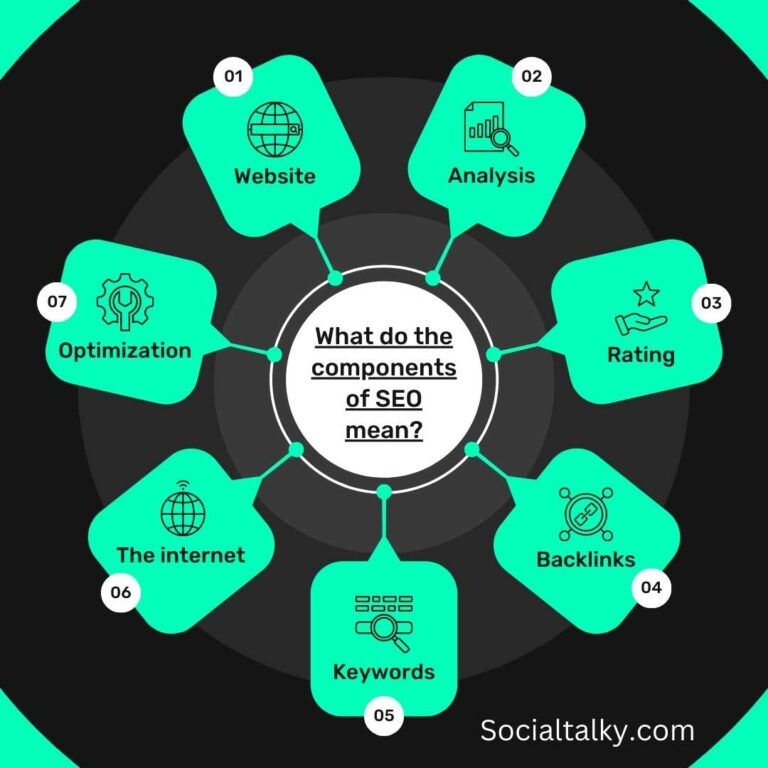SEO Basics: How to Boost Your Website’s Visibility
In the vast digital landscape, having a website is just the first step to establishing your online presence. To truly thrive and reach your target audience, you need to understand and implement SEO (Search Engine Optimization) basics. SEO is the magic wand that can help your website climb the ranks of search engine results pages (SERPs), driving organic traffic and potential customers your way.
Keyword Research
Keyword research is the cornerstone of any successful SEO strategy. Start by identifying relevant keywords and phrases that potential visitors might use to find your content. There are various keyword research tools available, such as Google Keyword Planner and SEMrush, to help you discover high-traffic and low-competition keywords. Once you have your list, strategically integrate these keywords into your website’s content, including titles, headings, and body text. This ensures search engines understand the relevance of your content to user queries.
On-Page Optimization
On-page optimization involves making your website’s individual pages more search engine-friendly. This includes optimizing meta titles and descriptions to provide a concise and compelling preview of your content in the search results. Additionally, use header tags (H1, H2, H3, etc.) to structure your content logically, making it easier for both users and search engines to navigate. Don’t forget to optimize images by using descriptive alt tags. These efforts collectively enhance the user experience and boost your website’s ranking potential.
Integrating the expertise of an on-page SEO agency like Sure Oak can elevate these strategies, optimizing every detail from keyword integration to site structure. Their precision aids in aligning content with search engine algorithms, fostering a more intuitive user experience.
Content Quality
Creating high-quality, valuable content is essential for SEO success. Your content should be informative, engaging, and relevant to your target audience. Google and other search engines prioritize websites that consistently produce fresh and valuable content. Regularly update your website with blog posts, articles, or other relevant content that addresses the needs and interests of your audience. Quality content not only attracts visitors but also encourages them to stay on your site longer, reducing bounce rates and improving your SEO rankings.
Link Building
Link building is a fundamental aspect of SEO that involves acquiring external links, also known as backlinks, from other reputable websites to your own. Search engines consider these links as votes of confidence in your site’s authority and relevance. To get started with link building, focus on creating high-quality, shareable content that naturally attracts links. Additionally, reach out to industry influencers and other website owners in your niche to build relationships and secure backlinks. Guest posting on reputable websites is another effective way to earn valuable backlinks. However, remember that quality matters more than quantity, so prioritize relevant and authoritative links over sheer volume. In addition, if you need assistance with this part of SEO, you can always hire a link building service.
Technical SEO
Technical SEO ensures that your website is accessible and easy to crawl for search engines. This includes optimizing your website’s loading speed, mobile-friendliness, and ensuring it’s secure with HTTPS. Create an XML sitemap to help search engines index your pages more efficiently and use robots.txt to guide search engine bots on which parts of your site to crawl or exclude. Regularly check for broken links and fix them promptly to maintain a smooth user experience. By addressing these technical aspects, you’ll enhance your website’s visibility and user satisfaction.
Monitoring and Analytics
Once you’ve implemented the essential SEO techniques, it’s vital to monitor and analyze your website’s performance. Tools like Google Analytics and Google Search Console are invaluable for tracking traffic, user behavior, and keyword rankings. Regularly reviewing these metrics allows you to identify what’s working and what needs improvement. Pay attention to your website’s click-through rate (CTR), conversion rates, and bounce rates to gauge user engagement and the effectiveness of your SEO efforts. Additionally, keep an eye on your competitors to see how your website compares in terms of rankings and organic traffic.
Local SEO
If your business has a physical presence or serves a specific geographic area, local SEO is paramount. Local SEO strategies involve optimizing your website and online presence to rank higher in local search results. To get started, claim and optimize your Google My Business listing, ensuring that your business name, address, and phone number (NAP) are accurate and consistent across all online platforms. Encourage customer reviews and ratings on platforms like Google, Yelp, and TripAdvisor, as these can significantly impact your local search rankings. Local SEO helps you connect with nearby customers looking for products or services you offer, making it a crucial aspect of your digital marketing strategy.
Evolving with SEO Trends
The world of SEO is dynamic, and what works today may not be as effective tomorrow. Search engines continually update their algorithms to provide users with the best possible search results. To stay ahead in the SEO game, it’s essential to keep up with industry trends and algorithm updates. Join SEO forums, follow reputable SEO blogs, and attend webinars or conferences to stay informed about the latest developments. Adaptability is key; be ready to adjust your strategies and tactics as needed to maintain or improve your website’s rankings. By staying current with SEO trends, you’ll be well-prepared to navigate the ever-changing digital landscape successfully.
Final Thoughts
SEO remains a crucial tool for businesses and individuals looking to establish a strong online presence. By mastering the SEO basics of keyword research, on-page optimization, content quality, link building, and technical SEO, you can significantly improve your website’s visibility in search engine results. Remember that SEO is an ongoing process, and staying up-to-date with the latest trends and best practices is key to maintaining and increasing your online visibility. So, roll up your sleeves, dive into the world of SEO, and watch your website rise through the ranks, attracting more visitors and potential customers along the way.



